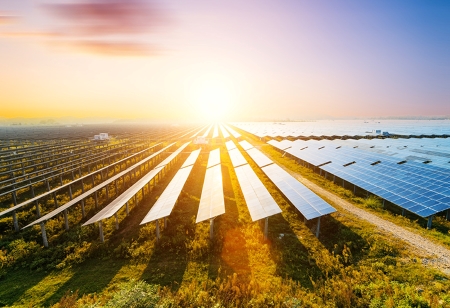
To promote renewable energy, India and Sri Lanka have agreed to build a 135-megawatt solar power plant in the island nation's eastern port town of Trincomalee in two stages. The project has been approved by the Sri Lankan Cabinet, as the government aspires to produce 70% of its electricity needs from renewable sources by 2030."The National Thermal Power Corporation of India and the Ceylon Electricity Board have entered into an agreement to jointly implement a solar power project in two stages," said a note from the Cabinet meeting held this week.
"As the first stage of this project, it is expected to implement a solar power project of 50 megawatts with a total estimated investment of USD 42.5 million and to construct a 220 kilowatts transmission line with 40-km length from Sampoor to Kappalthure spending USD 23.6 million. It is expected to complete this stage in two years from 2024 to 2025," it said.
A solar power generation plant with an additional 85 megawatts is expected to be constructed under a total investment of USD 72 million at the second stage of this project, the note said.
As reported by the Indian government, it is willing to encourage and enhance collaboration in the renewable energy sector by running and supporting power production projects utilising solar and wind power, including coastal wind and biomass.
The memo further stated that India will offer continuous transmission of infrastructure in areas mutually agreed upon in Sri Lanka, including the northern and eastern provinces, in collaboration with private and state entrepreneurs in India and Sri Lanka.
A 2013 deal with NTPC to develop a thermal power station in Sampur was subsequently cancelled due to environmental concerns over the use of coal for electricity generating.

